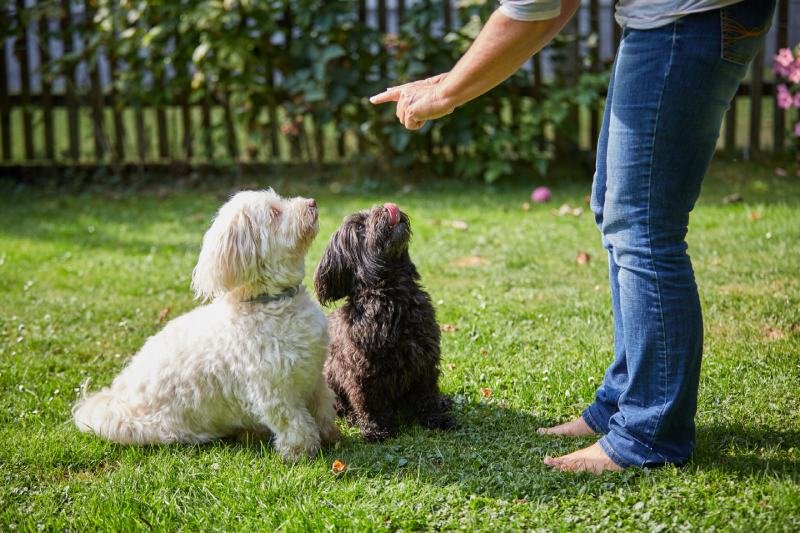Have you ever thought about enjoying a meal out without leaving your furry friend at home? Imagine sitting at a cozy table, sipping your favorite drink while your well-behaved dog lounges quietly by your side. The trend of dog-friendly restaurants is on the rise, making this dream a reality for many pet owners. In this article, let’s take a closer look at this new dining experience and how you can successfully prepare your dog for it.

This image is property of www.dogster.com.
The Growing Trend of Dog-Friendly Restaurants
In recent years, an increasing number of restaurants have started to welcome dogs. This shift may stem from the growing recognition of pets as family members. Dog owners seek places where their furry companions can join them, enhancing the dining experience for everyone involved. However, many establishments require dogs to be well-trained to ensure a pleasant atmosphere for all guests.
As a dog owner, you have an excellent opportunity to support this trend by training your pet effectively. But where do you start? Understanding basic training requirements is essential for a successful outing with your pup.

This image is property of www.dogster.com.
Training Overview: Preparing Your Dog for Restaurant Etiquette
Training your dog for restaurant behavior can be a challenge. The excitement and various distractions in a dining environment can overwhelm even the most well-behaved animals. However, with the right approach, it’s absolutely achievable. Proper preparation is key, and it involves focusing on a few crucial training steps to help your dog understand what’s expected in a restaurant setting.
Step 1: Basic Obedience – The Foundation of Good Behavior
The cornerstone of any dog training program is ensuring your dog understands essential commands. Commands such as “sit,” “stay,” and “lie down” are your primary tools for successful outings. These basic behaviors lay the groundwork for your dog’s overall discipline.
Why Basic Commands Matter
- Control: Basic commands help you maintain control over your dog, regardless of the distractions present.
- Safety: Ensuring your dog can follow commands keeps them – and other patrons – safe.
- Social Harmony: An obedient dog contributes to a more enjoyable atmosphere for diners.
Make sure to regularly practice these commands at home, because depending on the environment, your dog may need to repeat them in different contexts. This effort will pay off when you hit the restaurant scene.
Step 2: Teaching the Quiet Command
One of the most challenging behaviors to manage in a busy restaurant is barking. Teaching your dog to control their barking is crucial for the enjoyment of everyone around you. The “quiet” command can be achieved through various methods, typically starting with the “speak” command.
The Process to Teach “Quiet”
-
Start with “Speak”: Train your dog to bark on command. This step is vital for helping them understand when it’s acceptable to vocalize.
-
Introduce “Quiet”: After your dog barks, use the command to signal them to stop. Initially, reward them for stopping even if it’s just for a moment.
-
Reinforce Silence: As your dog begins to grasp the idea, reward them for longer periods of silence. This reinforcement builds a positive association with being quiet.
Step 3: Practice Attention Commands
Maintaining your dog’s focus in a bustling restaurant is essential, and that’s where the “attention” command comes in. Teach your dog a specific command such as “look” to help them learn to give you their focus regardless of what’s happening around them.
Tips for Teaching Attention
-
High-Value Rewards: Use their favorite treats or toys to reward them when they respond to the attention command promptly.
-
Gradual Distractions: Start your training in lower-distraction environments. Gradually introduce your dog to busier places, making sure to practice the attention command.
-
Consistency: Repeat the training regularly, ensuring that your dog associates the command with maintaining focus on you.
Step 4: Setting Up for Success
Even with effective training, the restaurant experience can be overwhelming for your dog. To help ensure a smooth outing, you might find it beneficial to plan your visits strategically.
Key Considerations for Restaurant Visits
-
Timing: Choose less crowded times to visit the restaurant. Early afternoons or weekdays can be ideal for initial visits.
-
Exercise: Make sure your dog gets adequate exercise before heading out. A good walk or play session can help expend excess energy, making them more likely to relax in the restaurant.
-
Engaging Tools: Bring along high-value treats, their favorite toy, and fresh water. These will keep them engaged and comfortable while you enjoy your meal.
Final Thoughts on Restaurant Behavior Training
Training your dog for restaurant behavior is an advanced skill that requires consistent effort and effective reinforcement of basic commands. Remember, the goal isn’t just to prevent your pup from causing disruptions, but to enrich the dining experience for everyone.
As you embark on this training journey, enjoy the process of building a better relationship with your furry friend. Your patience and dedication will pay off as you both adapt to dining out together with ease. For many dog owners, the joys of sharing a meal with your pet in a dog-friendly establishment can be genuinely rewarding. With your dog well-prepared, that ideal outing is just around the corner!
By investing time into training and acknowledging the unique aspects of the restaurant experience, you can foster a welcoming environment not just for yourself and your dog, but also for other diners. Imagine how fulfilling it will be to sit down at a table with a well-behaved pup quietly enjoying the day by your side. Enjoy your future dining experiences, and don’t forget to take your furry friend along!

This image is property of www.dogster.com.
